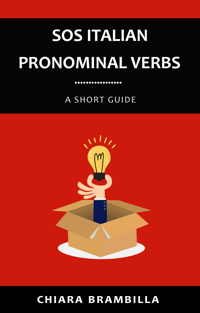
Italian is a language rich in cultural nuance, and one of the key distinctions learners must grasp is the difference between formal and informal Italian language. This distinction influences how you address others, depending on the context, the relationship, and the level of respect required. A clear example is the use of “tu” and “Lei”, which change the tone of your interactions in Italian. So, knowing when to use formal vs. informal language is essential to mastering Italian and communicating effectively in both social and professional settings.
The Basics of Formal and Informal Language in Italian
In Italian, the way you address someone reflects the level of respect or familiarity in the relationship. “Tu” is used in informal situations, while “Lei” is reserved for formal contexts.
Understanding when to use each form is crucial because using the wrong one can come off as disrespectful or overly distant, depending on the context. Let’s break down these two forms with examples.
Informal Italian Language: “Tu”
As I’ve just mentioned, “tu” form is informal and it’s used when speaking with people you know well or when the situation doesn’t require formality. Here are the main contexts where “tu” is appropriate:
When to Use “Tu”
- Friends and family: You will use “tu” with anyone you are close to, including friends, siblings, cousins, and other relatives.
- Peers and colleagues: If you’re in a casual environment or the workplace culture is informal, “tu” is acceptable with colleagues.
- Children and younger people: “Tu” is almost always used when speaking to children or teenagers, even if you don’t know them well.
Examples:
- Ciao, come stai? (Hi, how are you?)
This phrase is used when greeting a friend, family member, or peer.
- Vuoi venire con noi alla festa di Giada stasera? (Do you want to come with us to Giada’s party tonight?)
This is an informal way to invite someone to an event.
In informal contexts, “tu” affects verb conjugations. For example, in the sentence “Come stai?” the verb “stai” is the second-person singular form of stare (to be), which aligns with “tu”.
Switching to “Tu” from “Lei”
Sometimes in formal conversations, the other person may say “Diamoci del tu”, meaning “Let’s switch to using tu.” This is an invitation to drop the formality and speak more casually, signifying a closer or more comfortable relationship.
Formal Italian Language: “Lei”
The “Lei” form is used for formal conversations. Although “Lei” technically means “she,” it is the pronoun used to politely address people of any gender in a respectful or professional manner.
When to Use “Lei”
- Strangers: When addressing someone you don’t know, particularly an adult, “Lei” is the appropriate form.
- Professional settings: In business meetings, with clients, or in formal work environments, you should always use “Lei” unless invited to switch to “tu”.
- Older people: As a sign of respect, you generally use “Lei” when speaking with elderly individuals, unless they ask you to use “tu”.
- Formal written communication: In emails, letters, or official documents, “Lei” is typically used.
Examples:
- Buongiorno, come sta? (Good morning, how are you?)
This is the formal version of “how are you?” using “Lei”.
- Mi scusi, potrebbe aiutarmi? (Excuse me, could you help me?)
“Lei” affects verb conjugation here: “potrebbe” is the third-person singular form of potere (to be able to).
Notice that “Lei” is always capitalized in written formal communication to distinguish it from the regular third-person pronoun.
When and How to Switch Between “Tu” and “Lei”
Switching between “tu” and “Lei” depends on the evolving relationship or context. Generally, it’s safer to start with “Lei” in formal situations or when meeting someone for the first time, especially in business environments or when speaking to someone older.
If the other person feels comfortable, they may invite you to switch to “tu”. Accepting this shift can make the conversation more relaxed, but always wait for the other person to suggest it if you are in doubt.
Practical Tips for Using “Tu” and “Lei” Correctly
- Err on the side of formality: It’s better to start with “Lei” in ambiguous situations. It shows respect and politeness.
- Pay attention to body language: In formal situations, notice if the other person seems relaxed or more formal. This can help guide whether to continue with “Lei” or switch to “tu”.
- Listen for cues: Native speakers will often guide you by inviting you to use “tu” when appropriate.
Understanding the difference between tu and Lei in Italian is key to communicating effectively and respectfully. So, start practicing these distinctions in real-life conversations, and you’ll navigate Italian social and professional interactions with ease.
If you found this article useful, don’t forget to share it with the world and to like our Facebook Page!
Credits
Image by Copilot





 Five Common Italian Idioms and Expressions
Five Common Italian Idioms and Expressions

